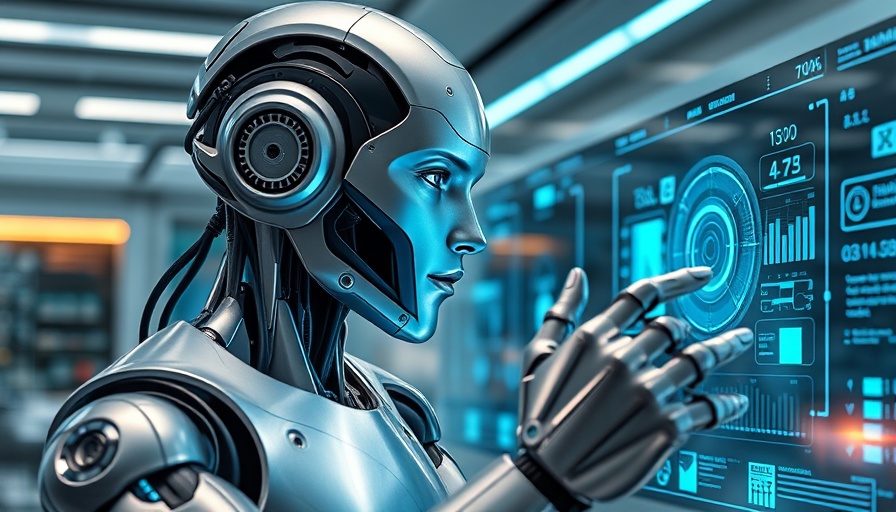
Hugging Face's SmolVLA: A Game-Changer in Robotics
The advancements in robotics technology are moving at breakneck speed, and Hugging Face is setting a new precedent with their latest model, SmolVLA. Designed for efficiency, this innovative model can run seamlessly on standard consumer devices like a MacBook. This breakthrough isn't just a tech novelty; it opens the door for tech enthusiasts and developers to explore robotics in an entirely new way.
Making Robotics Accessible
The launch of SmolVLA is part of Hugging Face's broader mission to democratize robotics. By offering an AI model that is both lightweight and powerful, Hugging Face aims to enable more people—including students, hobbyists, and young professionals—to engage with robotics projects without the need for expensive hardware. As technologies evolve, accessibility becomes a defining factor in innovation, and SmolVLA's open-access framework is a prime example of this shift.
Understanding the Technology Behind SmolVLA
SmolVLA stands out with its 450 million parameters optimized for handling vision, language, and action (VLA) within robotic systems. Moreover, its “asynchronous inference stack” is a noteworthy feature allowing robots to react swiftly, a crucial advantage in dynamic environments. This means that robots powered by SmolVLA can better interact with the world around them, leading to practical applications across various fields such as healthcare, manufacturing, and education.
Robotics in Everyday Life
As robotic tech becomes more embedded in our daily routines, the potential for SmolVLA is immense. Imagine controlling a robotic arm for home projects or automating simple tasks around the house—all possible with this new model. This trend indicates a shift where advanced technology is not just confined to laboratories but becomes integrated into everyday experiences.
The Future of Robotics Development
The implications of this robotics model stretch into the future of technology, especially as AI and robotics converge. The ability of individuals to download and implement sophisticated models like SmolVLA can lead to innovative solutions for common problems, ranging from household conveniences to education tools. This trend emphasizes evolving tech landscapes where anyone armed with creativity and the right resources can contribute to meaningful developments in the industry.
Getting Started with Robotics
For aspiring tech enthusiasts eager to dive into robotics, the introduction of SmolVLA represents both an opportunity and a call to action. Accessing this technology is easier than ever, and community-shared datasets make it accessible for hands-on experimentation. The revolution in robotics is upon us—now it's up to the innovators to seize the moment.
Conclusion
Hugging Face’s SmolVLA model not only exemplifies cutting-edge technology but also embodies the spirit of accessibility and innovation. As more people engage with this technology, the landscape of robotics is poised for exciting changes. Is the future of robotics in your hands? Now is the time to start exploring!
 Add Row
Add Row  Add
Add 




Write A Comment